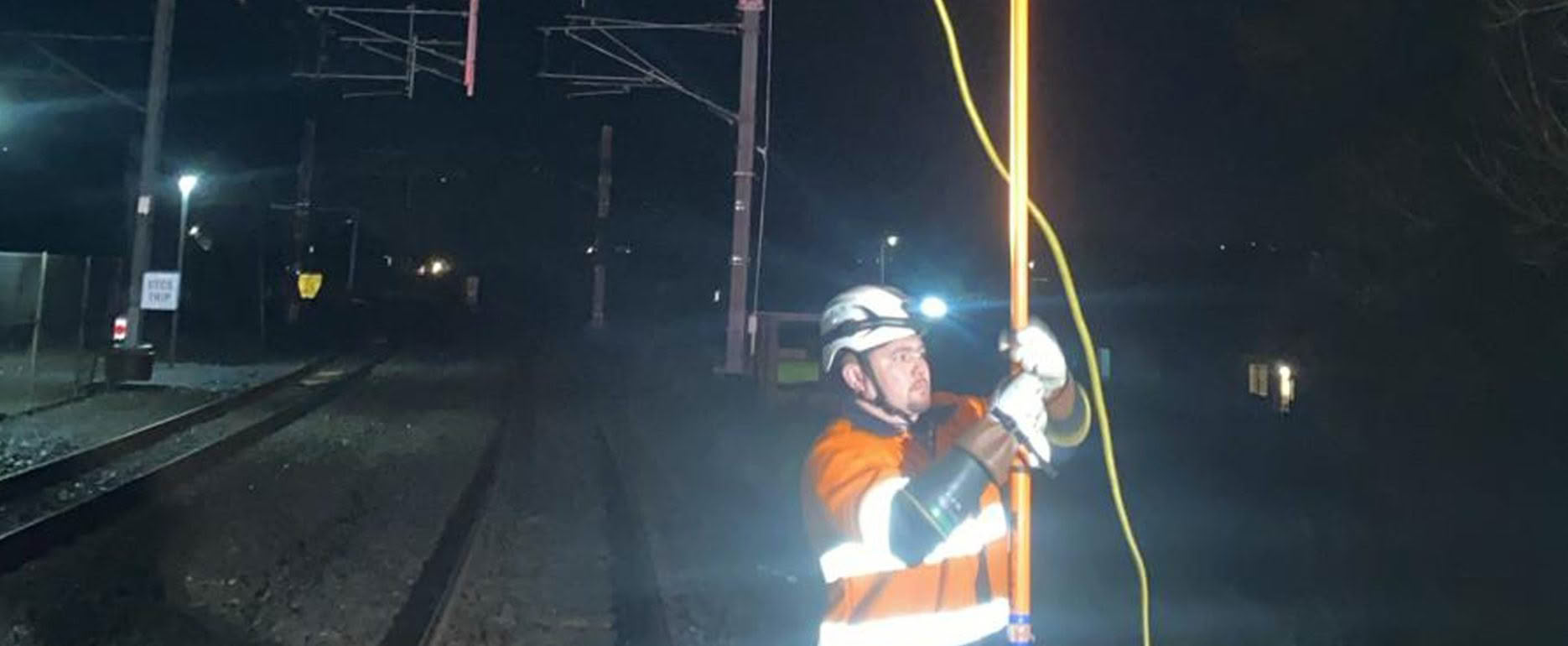
Project Overview
During the Matariki long weekend, while the city was quiet and the community rested, our dedicated team of Conductive engineers took on a critical task at the newly constructed Pukekohe Station. Understanding the importance of electrical safety, especially in a high-voltage environment like a railway station, our mission was to test and verify the effectiveness of the touch potential mitigations implemented at the site.
Objective
The primary goal of this project was to ensure that all safety measures designed to protect against touch potentials were functioning correctly. This testing is vital to prevent any accidental electric shocks to personnel or passengers who might come into contact with energized structures or equipment.
Testing Process
Preparation and Planning: Our team meticulously planned the testing procedure to ensure comprehensive coverage of all potential risk areas. This included:
- Identifying key testing locations around the station, especially areas with high pedestrian traffic and proximity to electrified equipment.
- Reviewing the design and installation of grounding systems and insulating barriers.
On-Site Execution: Over the Matariki weekend, our engineers executed the testing plan. Key activities included:
- Touch Potential Testing: Using specialized equipment, we measured the voltage difference between metallic structures and the ground to ensure no dangerous potential exists that could lead to electric shocks upon contact. This method was selected as it typically represents the worst-case scenario in terms of electrical hazards.
- Adherence to Standards: Our testing adhered to the following standards, ensuring that our methods and results were aligned with industry best practices:
- BS EN 50122.1: Railway applications – Fixed installations – Electrical safety, earthing, and the return circuit.
- E-St-AE-0101: Electrical safety standards for railway installations.
- E-SP-AE-61318: Standards for the protection against electric shock in railway applications.
Data Analysis:
Post-testing, we analysed the collected data to identify any discrepancies or areas where mitigation measures might need enhancement. Our analysis focused on ensuring that all readings were within safe limits as per the mentioned standards.
Findings and Results
The testing revealed that the touch potential mitigations at Pukekohe Station were highly effective. Key findings included:
- Touch Potential: No significant voltage differences were found between metallic structures and the ground, confirming that insulation and grounding measures were adequate and compliant with BS EN 50122.1, E-St-AE-0101, and E-SP-AE-61318 standards.
Conclusion
The successful testing at Pukekohe Station not only demonstrated the effectiveness of the installed safety measures but also reinforced our commitment to ensuring the highest standards of electrical safety. The dedication and expertise of the Conductive engineering team were pivotal in completing this crucial task during a time when disruption to public activities was minimized.
- Detailed designs including 3D BIM model
- Provision of materials schedule to enable procurement
- Switching and electrical sectioning design
- Construction staging for wire run installation
Project Summary
Client
John Holland/KiwiRail
Location
Auckland, NZ
Services
Overhead Traction
Design & Construction
Completion Date
June 2024

